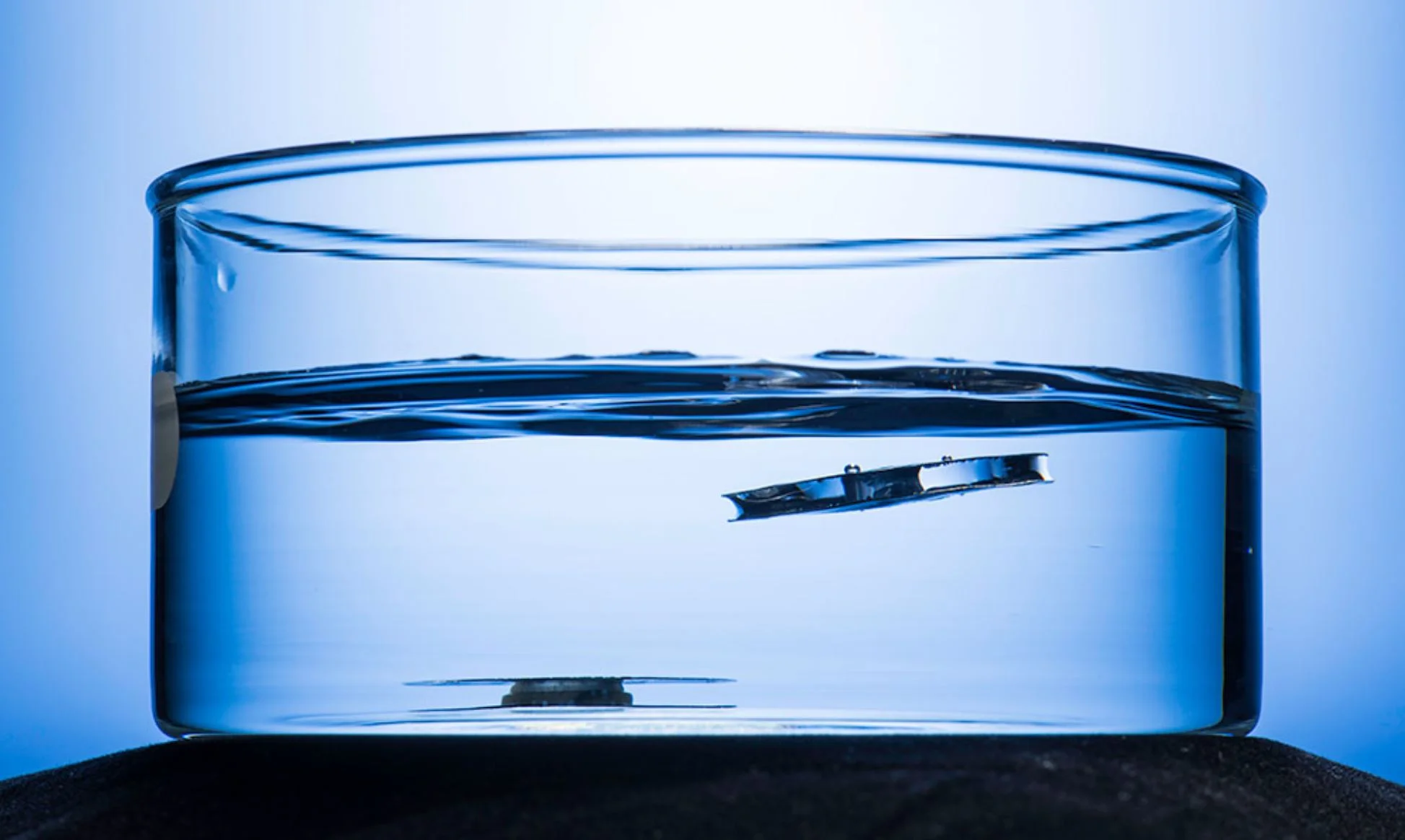Scientists from the University of Rochester claim to have finally developed a new metallic structure that genuinely refuses to sink, no matter what you do to it!
The material stays buoyant no matter what you do to it – Image Credit: University of Rochester photo / J. Adam Fenster
Humankind has long been captivated by the search for the holy grail concerning unsinkable materials, ships, and structures. Despite our ambition, we never really succeeded in creating such a thing. This was not for lack of trying however, many attempts to create an unsinkable vessel failed in the past. The Titanic, in particular, is an imaginative example of this. Nonetheless, scientists from the University of Rochester claim to have finally developed a new metallic structure that genuinely refuses to sink, no matter what you do to it.
The structure is created by the use of lasers that carve the surfaces of metals with complicated micro- and nanoscale patterns that will trap air and make the surfaces extremely water repellent. Professor Chunlei Guo, one of the authors of the paper that describes this incredible metallic structure, stated that the new material could work in applications such as wearable floatation devices that would remain buoyant even if it got pierced during use as well as unsinkable ships and ocean monitoring gadgets.
The researchers got inspiration from nature for their invention. They looked at specific species of spiders and fire ants that are able to endure water for an extended period of time by trapping air in a confined area. Fire ants, when in large groups, are able to form rafts by use of their hydrophobic bodies. Likewise, diving bell spiders can create an underwater dome that they fill with air, which they take from the surface with super-hydrophobic limbs.
Professor Guo’s lab created a structure in which the treated surfaces on two parallel aluminum plates (the researchers claim that it doesn't have to be aluminum, any metal can be used) face inward, not outward, so they are enclosed and free from external wear and tear. The surfaces are split up by just the right distance to trap and hold enough air to keep the structure floating, basically producing a waterproof chamber. The super-hydrophobic surfaces will inhibit water from infiltrating the compartment even when the structure is forced to submerge in water.
The resulting structure is so incredibly buoyant that, even after being immersed in water for 2 months, it immediately bounced back to the surface. In addition, the material can stay floating after being pierced several times. We can't wait to see what applications will be developed with this incredible material.
Sources and further reading: Highly Floatable Superhydrophobic Metallic Assembly for Aquatic Applications / University of Rochester press release / Laser-generated surface structures create extremely water-repellent metals
If you enjoy our selection of content please consider following Universal-Sci on social media:










